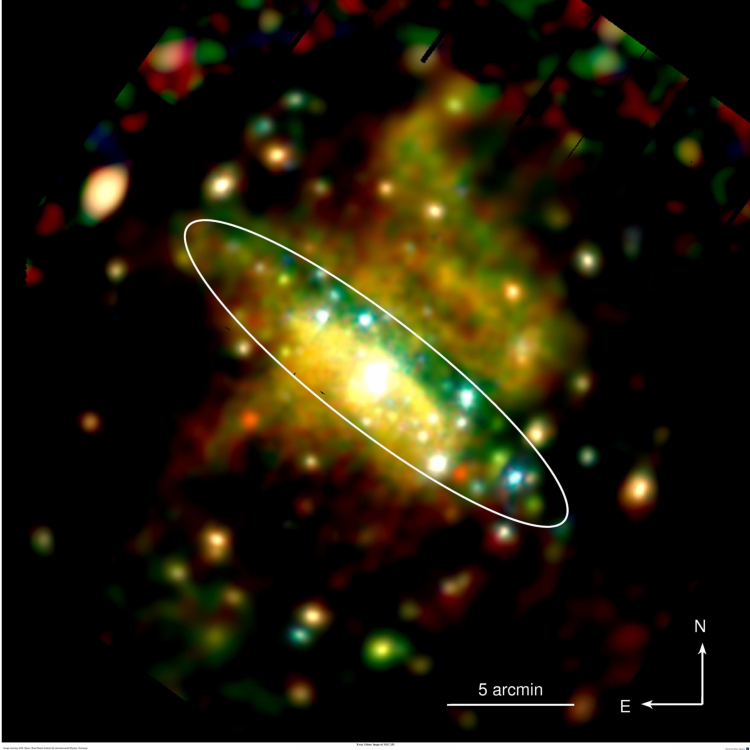
 Credit:M. Bauer, Max-Planck Institute for extraterrestrial Physics, Germany and ESA
Credit:M. Bauer, Max-Planck Institute for extraterrestrial Physics, Germany and ESA
Diffuse Starburst
NGC 253, a starburst galaxy where black holes seem to be gathering, is an object of intense interest for astronomers, as a host of both newborn and dead stars. X-ray emission is a good tracer of the high energy processes associated with both the infant and geriatric populations. The image above is a new X-ray image by the XMM-Newton X-ray observatory. In this image, emission from discrete sources in the galaxy were removed to emphasize the diffuse emission, and then the X-rays were color-coded by energy in the usual way (red for low energy X-rays and blue for higher-energy ones). The white oval shows the optical extent of the galaxy, which is almost edge on as seen from earth. The XMM-Newton observation shows two haloes of hot gas, one above the galactic disk and one below. The extent and spectra of this hot gas is significantly different, more extended and of higher energy above the disk and of lower energy and less extended below. The XMM-Newton image also shows a glow of diffuse X-ray emission along the galactic disk. The source of the extended emission is believed to be winds from hot young massive stars, hot gas produced by supernovae, and unresolved emission from neutron stars and black holes.
<
HEA Dictionary ● Archive
● Search HEAPOW
● Other Languages
● HEAPOW on Facebook
● Download all Images
● Education ● HEAD
>
Each week the HEASARC
brings you new, exciting and beautiful images from X-ray and Gamma ray
astronomy. Check back each week and be sure to check out the HEAPOW archive!
Page Author: Dr. Michael F. Corcoran
Last modified Tuesday, 27-Feb-2024 10:06:49 EST


